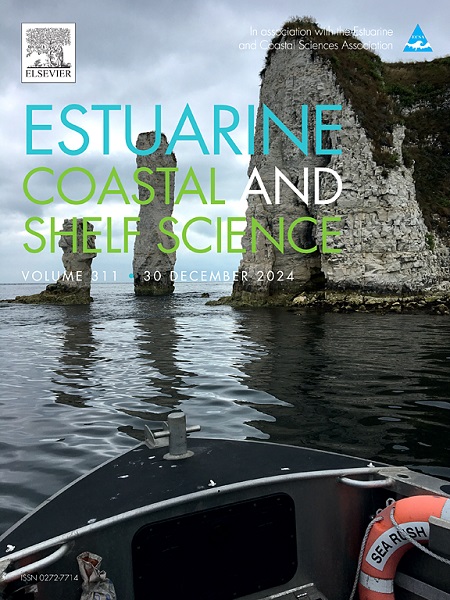Comparisons between estuary-associated ichthyofaunas in ecoregions around the Indian Ocean
IF 2.6
3区 地球科学
Q1 MARINE & FRESHWATER BIOLOGY
引用次数: 0
Abstract
This review examines possible fish colonisation processes that started in the Early Jurassic and gained momentum during the Cretaceous when plate tectonics and continental drift created the Indian Ocean between Africa, Madagascar, Asia and Australia. Initial colonisation of the newly created estuaries by fish is likely to have occurred during the Devonian in eastern Gondwana when these land masses were confined to the temperate waters of the southern hemisphere. A major marine extinction event 372 Ma would probably have eliminated many of these taxa from those estuaries. Tropical marine fish families from the Tethys Sea region would then have used the epicontinental seaways between Africa, Madagascar, India and Australia to colonise the estuaries on these drifting land masses. Speciation by some of these tropical taxa would then have occurred such that the southern temperate waters became occupied by a less species rich cool-water ichthyofauna. A Bray-Curtis similarity matrix was created using the presence/absence of fish families and species from selected ecoregions around the Indian Ocean rim. These analyses showed that fish families present in estuaries on the eastern and western side of the Indian Ocean were over 74 % similar but that the species present were only 40 % similar. In terms of past and present geodispersal of fish taxa, the northern route through tropical coastal waters was always viable but long distance movements through the large central or southern parts of the Indian Ocean basin was not. In addition, dispersal of fish species across arid coastal ecoregions where estuaries are scarce appears to have limited the continuity of ichthyofaunal colonisation processes around the ocean rim.

印度洋周边生态区域与河口相关的鱼系比较
这篇综述研究了可能的鱼类殖民化过程,这一过程始于早侏罗世,并在白垩纪期间获得了动力,当时板块构造和大陆漂移在非洲、马达加斯加、亚洲和澳大利亚之间创造了印度洋。鱼类对新形成的河口的最初殖民很可能发生在冈瓦纳东部的泥盆纪,当时这些陆地块被限制在南半球的温带水域。372年前的一次大型海洋灭绝事件可能会使这些河口的许多物种灭绝。来自特提斯海地区的热带海鱼科可能会利用非洲、马达加斯加、印度和澳大利亚之间的大陆外航道,在这些漂流的陆地上的河口定居。这些热带分类群中的一些物种形成之后,南温带水域就变成了种类较少的冷水鱼类区系。利用来自印度洋沿岸选定生态区域的鱼类科和物种的存在/缺失,创建了一个布雷-柯蒂斯相似性矩阵。这些分析表明,印度洋东部和西部河口的鱼类科相似度超过74%,但物种相似度仅为40%。就鱼类类群过去和现在的地理传播而言,通过热带沿海水域的北部路线总是可行的,但通过印度洋盆地中部或南部大片地区的长距离运动则不可行。此外,鱼类在河口稀少的干旱沿海生态区域的扩散似乎限制了海洋边缘鱼类种群定殖过程的连续性。
本文章由计算机程序翻译,如有差异,请以英文原文为准。
求助全文
约1分钟内获得全文
求助全文
来源期刊
CiteScore
5.60
自引率
7.10%
发文量
374
审稿时长
9 months
期刊介绍:
Estuarine, Coastal and Shelf Science is an international multidisciplinary journal devoted to the analysis of saline water phenomena ranging from the outer edge of the continental shelf to the upper limits of the tidal zone. The journal provides a unique forum, unifying the multidisciplinary approaches to the study of the oceanography of estuaries, coastal zones, and continental shelf seas. It features original research papers, review papers and short communications treating such disciplines as zoology, botany, geology, sedimentology, physical oceanography.

 求助内容:
求助内容: 应助结果提醒方式:
应助结果提醒方式:


